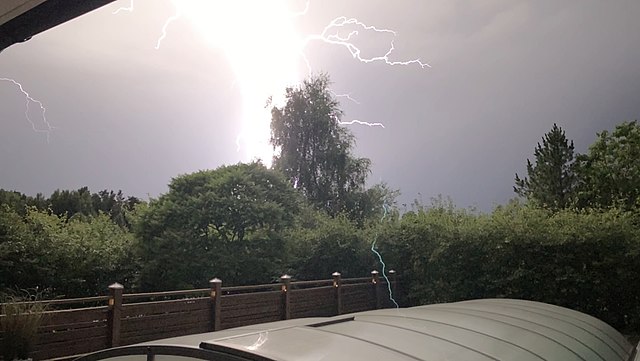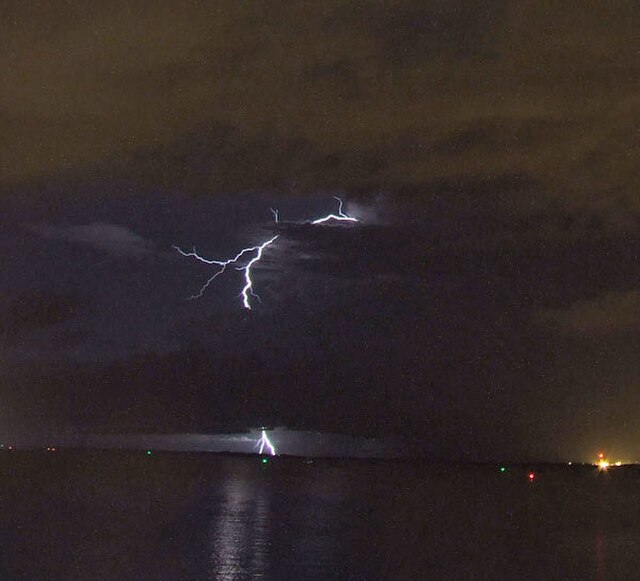A thunderbolt or lightning bolt is a symbolic representation of lightning when accompanied by a loud thunderclap. In Indo-European mythology, the thunderbolt was identified with the 'Sky Father'; this association is also found in later Hellenic representations of Zeus and Vedic descriptions of the vajra wielded by the god Indra. It may have been a symbol of cosmic order, as expressed in the fragment from Heraclitus describing "the Thunderbolt that steers the course of all things".
Zeus' head and thunderbolt on a coin from Epirus, 234 BC.
The thunderbolt pattern with an eagle on a coin from Olympia, Greece, 432-c.421 BC.
Zeus' head and thunderbolt on a coin from Capua, Campania, 216-211 BC.
Neo-Attic bas-relief sculpture of Jupiter, holding a thunderbolt in his right hand; detail from the Moncloa Puteal (Roman, 2nd century), National Archaeological Museum, Madrid
Lightning is a natural phenomenon formed by electrostatic discharges through the atmosphere between two electrically charged regions, either both in the atmosphere or one in the atmosphere and one on the ground, temporarily neutralizing these in a near-instantaneous release of an average of between 200 megajoules and 7 gigajoules of energy, depending on the type. This discharge may produce a wide range of electromagnetic radiation, from heat created by the rapid movement of electrons, to brilliant flashes of visible light in the form of black-body radiation. Lightning causes thunder, a sound from the shock wave which develops as gases in the vicinity of the discharge experience a sudden increase in pressure. Lightning occurs commonly during thunderstorms as well as other types of energetic weather systems, but volcanic lightning can also occur during volcanic eruptions. Lightning is an atmospheric electrical phenomenon and contributes to the global atmospheric electrical circuit.

Strokes of cloud-to-ground lightning strike the Mediterranean Sea off of Port-la-Nouvelle in southern France.
Upwards streamer emanating from the top of a pool cover
A bolt from the blue lightning strike which appears to initiate from the clear, but the turbulent sky above the anvil cloud and drive a bolt of plasma through the cloud directly to the ground. They are commonly referred to as positive flashes, despite the fact that they are usually negative in polarity.
Multiple paths of cloud-to-cloud lightning, Swifts Creek, Australia.








